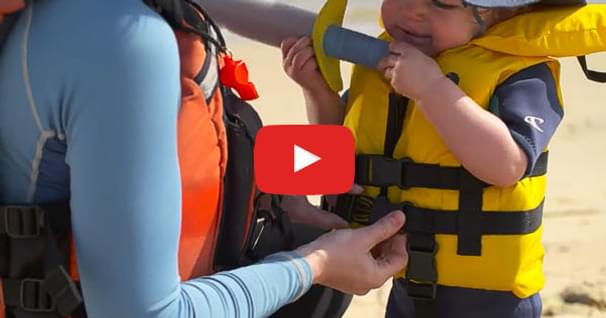Kid's Life Jackets
Of all the safety gear used by those who enjoy on-water sports, none should be scrutinized more than the family of life jackets/PFDs available. And, speaking of family, those devices designed for infants and youth are the most critical. Let’s take a closer look at several aspects of life jackets available for the youngest members of the paddling community.
Life jackets for children are designated by the weight range of the intended wearer: Infants/8-30 pounds; Child/30-50 pounds; and Youth/50-90 pounds. Manufacturers such as Extrasport, NRS, MTI Adventurewear and others all use about 10-11 pounds of flotation in their range of youngster gear. However, weight is not the only factor in developing a PFD that is going to work across a broad range of body types typical for developing youngsters.
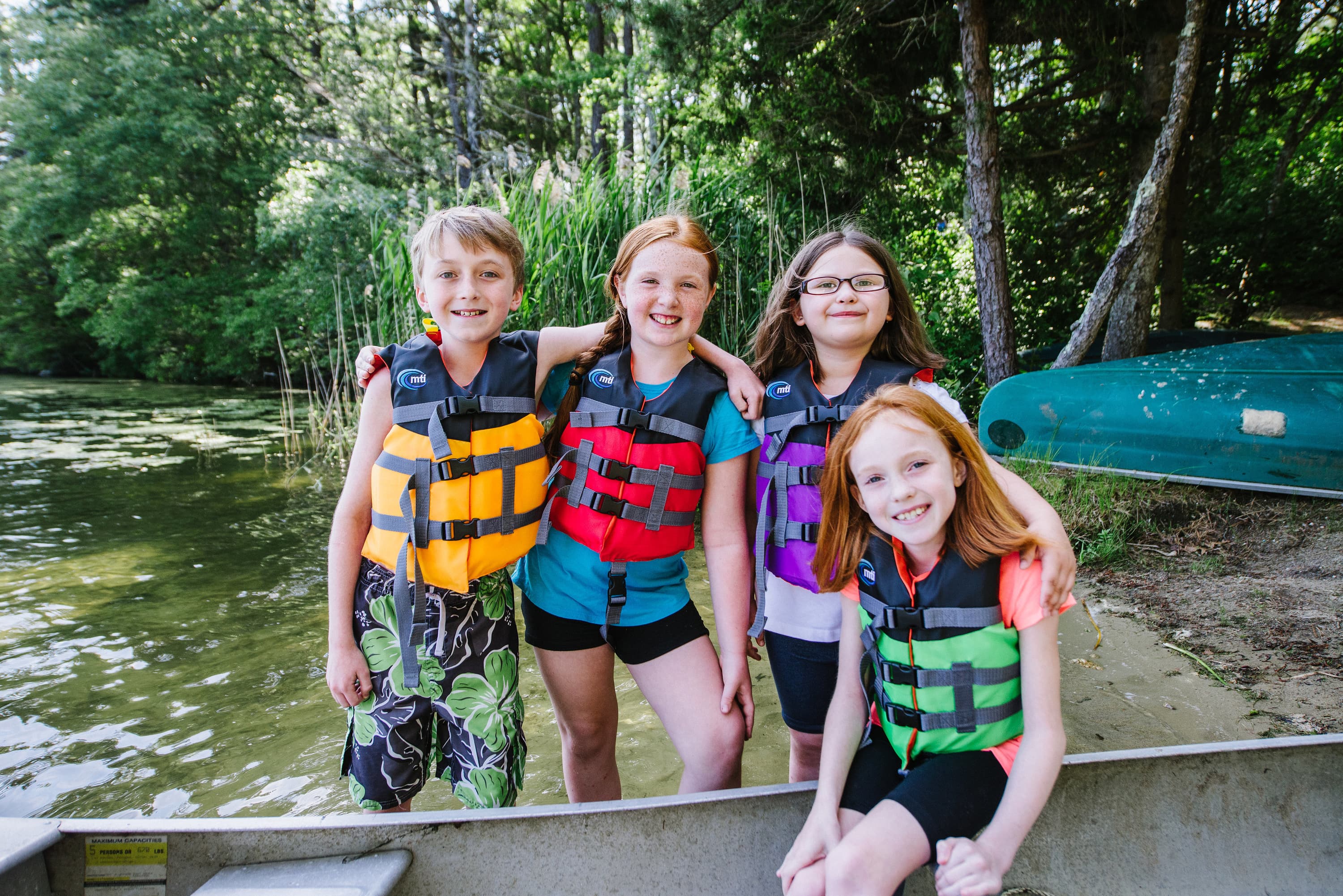
"Fit is paramount" says Lili Colby, co-owner of MTI Adventurewear, explaining that different styles have different fit parameters across the weight ranges and body types. In the child range of 30-50 pounds, there are several typical body shapes evolving. “Kids are tough”, she says, “they go through a morphing process as they grow - wide shoulders but potted bellies; some kids are skinny, some get wide, chubby leading to lanky.” Even in the youth range, two kids, each weighing 60 pounds can have two distinctly different body shapes.
TAHE 10'6 & 11'6 SUP-YAK Inflatables
2-in-1 Kayak & Paddle Board complete packages for single or tandem use.
Components of life jackets for children are also critical factors in the proper fit process. Lindas Grebe, product director/PFDs for Extrasport says its "better to think of PFDs as a piece of safety equipment, and not as a fashion thing, it’s very functional, it has to work!"
Towards that goal, critical features on children’s life jackets/PFDs include:
- Adjustable side, shoulder and waist straps to address body development (youth)
- Adjustable leg strap
- Grab loop or other quick hand-grab option (child)
- Quick “turn-over” capability (infant)
- Adequate arm/neck openings (comfort factor)
- Closures that reduce risk of child opening or removing jacket
- Quality construction in stitching, materials, etc.
- Proper sizing so when adjusted properly the PFD doesn’t rise up over chin/mouth and ears.
- Bright, easy-to-spot colors
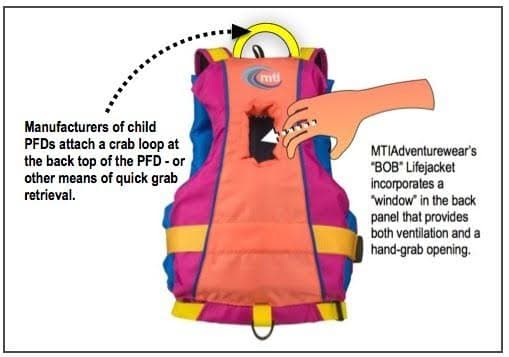
Right behind the functional aspects of selecting the proper PFD is for parents to be really mindful to make the youngster part of the decision-making process. “It’s important to fit the life jacket with the child,” encourages Colby. “Make it an event, build it up as something important, make it a rite of passage - having your own PFD makes you a real paddler!”
It should go without saying that trying the life jacket on is important, too. Test a new life jacket in a pool before going out on open water. Grebe adds that it’s important for parents to check them yearly for poor fit, making sure they are proper for the weight range of the child.
Like all safety functions, it’s no good unless you use it. Getting kids to wear their life jackets at all times is strongly influenced by the attitude and actions of their parent or other role model.
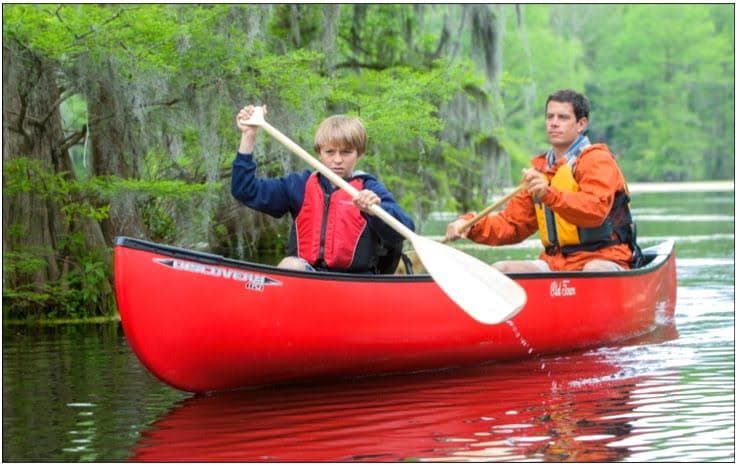
"If parents don’t promote use, they aren’t going to be worn," says Grebe. Colby says getting kids to wear a PFD is similar to using a seat belt in a car. “Instill that mindset. If a parent can’t be a roll model, how do you expect your child to want to wear a life jacket?” She is quick to add, "... and don’t badmouth the PFD!" It follows that the parent needs to be wearing one, too. "Lead by example," says Julie Bacon of Astral Designs, "Get them a PFD that they enjoy and want to wear."
Here are a few tips to keep in mind regarding PFD/life jackets for younger wearers:
- Get kids used to putting a PFD/life jacket on and then trying it out in the water; panic can make it hard for a PFD to function properly;
- To ensure a proper, snug fit, lift the child up by the shoulders of the PFD, their ears and chin should not slip through;
- PFDs are not babysitters! Keep an attentive eye on children at all times;
- Inflatable toys and rafts are not to be used in place of PFDs;
- Don’t assume that if a PFD works for one child, it will work for another;
- When ordering a PFD online, order two life jackets with overlapping specs to ensure you’ll get the proper, critical fit - and simply return the one that doesn’t fit;
- Don’t buy a ‘too large’ PFD, intending the child to “grow into it”;
- USCG does not recommend taking “infants” on board a recreational vessel.
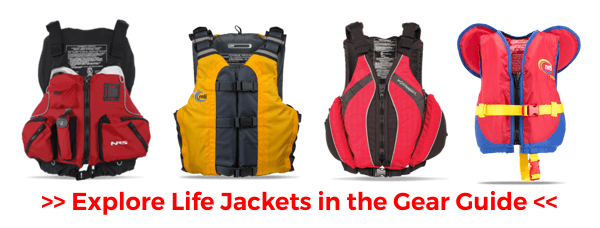
A PFD/life jacket has three functions:
- it must be available for proper use at the time of an accident/emergency;
- designed to keep your head out of the water;
- reliable enough to provide its design performance when needed.
If any one of these essential tasks fails, it can’t save your life.
Ultimately, regardless of all the innovations and range of components designed into any PFD/Life jacket, the safest one is the one you - and your children - are willing to wear!
Be Safe, have fun out there.
Tom Watson is an avid sea kayaker and freelance writer. He also posts articles and thoughts on his website tomoutdoors.com/blog/. He has written 2 books,"Kids Gone Paddlin" and "How to Think Like A Survivor" that are available on Amazon.
Related Articles
When it comes to ensuring a child's safety on the water, no piece of equipment is more vital than a life…
Tom Watson reviews some of the changes that are in store for defining “Life Jackets” and “PFDs”? It’s…
The PFD, or life jacket is your single most important piece of safety equipment. You need to choose one…



